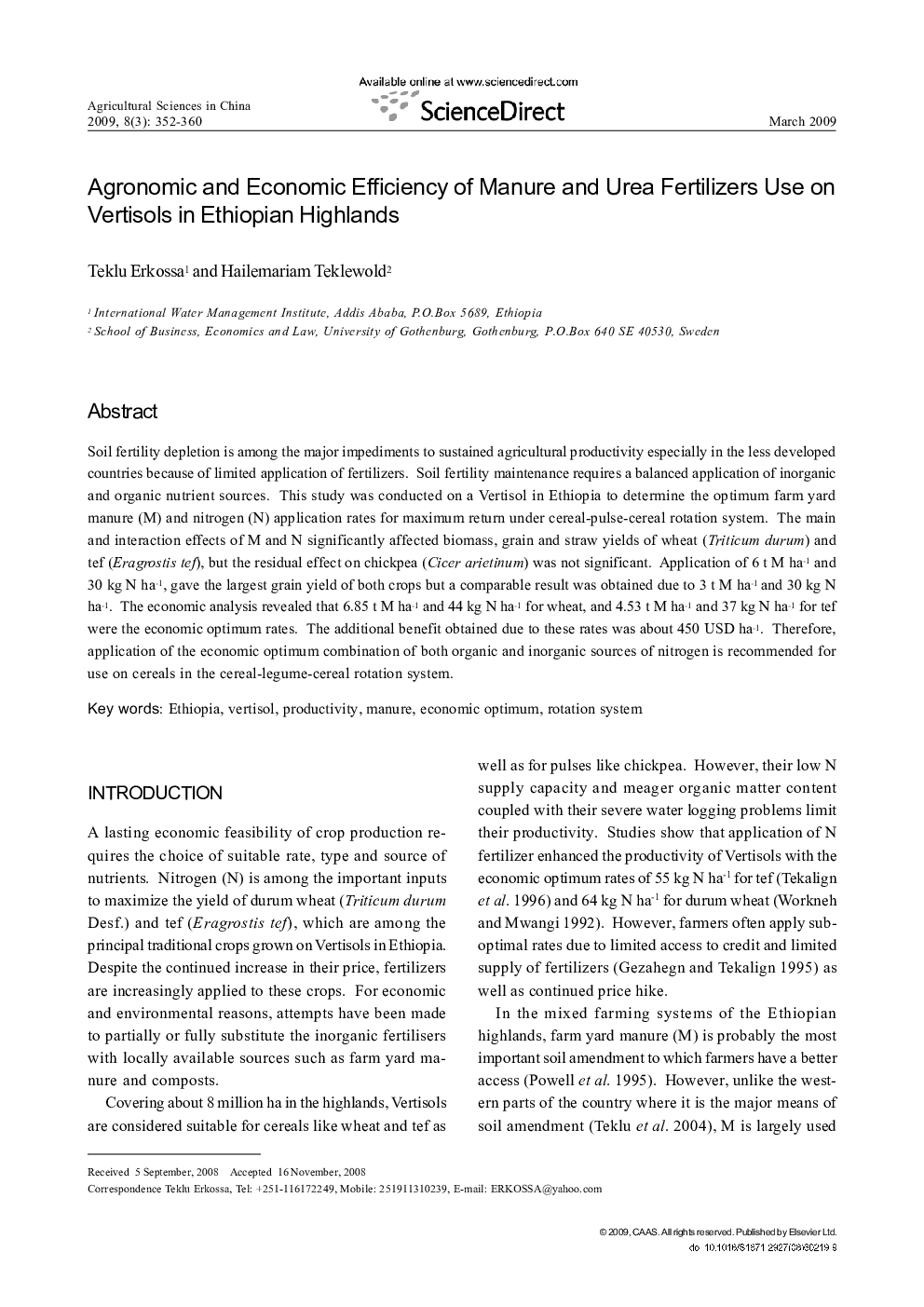| Article ID | Journal | Published Year | Pages | File Type |
|---|---|---|---|---|
| 4490412 | Agricultural Sciences in China | 2009 | 9 Pages |
Soil fertility depletion is among the major impediments to sustained agricultural productivity especially in the less developed countries because of limited application of fertilizers. Soil fertility maintenance requires a balanced application of inorganic and organic nutrient sources. This study was conducted on a Vertisol in Ethiopia to determine the optimum farm yard manure (M) and nitrogen (N) application rates for maximum return under cereal-pulse-cereal rotation system. The main and interaction effects of M and N significantly affected biomass, grain and straw yields of wheat (Triticum durum) and tef (Eragrostis tef), but the residual effect on chickpea (Cicer arietinum) was not significant. Application of 6 t M ha−1 and 30 kg N ha−1, gave the largest grain yield of both crops but a comparable result was obtained due to 3 t M ha−1 and 30 kg N ha−1. The economic analysis revealed that 6.85 t M ha−1 and 44 kg N ha−1 for wheat, and 4.53 t M ha−1 and 37 kg N ha−1 for tef were the economic optimum rates. The additional benefit obtained due to these rates was about 450 USD ha−1. Therefore, application of the economic optimum combination of both organic and inorganic sources of nitrogen is recommended for use on cereals in the cereal-legume-cereal rotation system.
